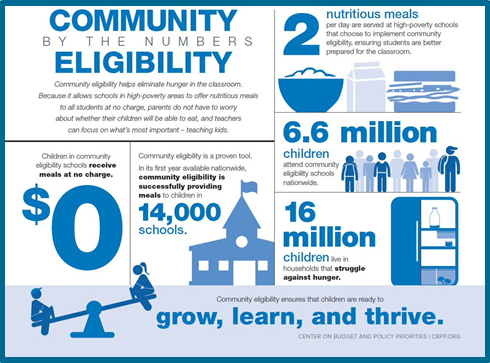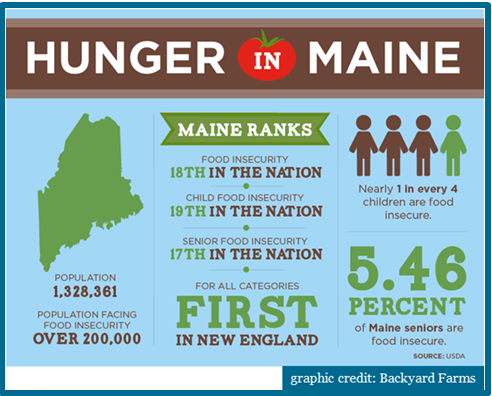Congress is currently deliberating over reauthorization of the Healthy, Hunger-Free Kids Act, which is crucial to protect school kids in Maine where the child food insecurity rate is the highest in New England.
U.S. Secretary of Agriculture Tom Vilsack issued an encouraging update on October 26th about implementation of the bipartisan law passed in 2010.
‘The numbers released today . . . [reflect] the commitment by thousands of schools, communities, physicians and nutrition leaders across the country to ensuring a healthier next generation,” Secretary Vilsack said in a press release. “Thanks to the improvements we have made in school nutrition, our nation’s children show up each day to healthier school environments, where they can easily get the nutrients they need for academic success and healthier futures. It is imperative that Congress moves quickly to reauthorize child nutrition legislation to give these men and women predictability in the work they are doing, and most importantly so that we do not reverse the progress made to date in improving the health and future well-being of America’s children.”
The U.S. Department of Agriculture (USDA) reports that 97 percent of schools is successfully meeting updated nutrition standards. USDA has found that compliance by high poverty schools with the Community Eligibility Program, which ensures universal access to healthy food for all children attending high-poverty schools, has increased by 20 percent over the past year. Closer to home in Maine, many schools that could benefit from the Community Eligibility Program have yet to do so often due to glitches in the state’s administration of this important program.
USDA also released a fact sheet detailing progress implementing the act.
“For the past three years, kids have eaten healthier breakfasts, lunches and snacks at school thanks to the bipartisan Healthy, Hunger-Free Kids Act, which made the first meaningful improvements to the nutrition of foods and beverages served in cafeterias and sold in vending machines in 30 years,” the fact sheet emphasizes.
While we are making progress with child food security here in Maine thanks to the Healthy, Hunger-Free Kids Act, surmountable problems persist in its implementation.
The statistics on hunger in Maine remain daunting. Nearly 1 in every 4 Maine children remain food insecure. And it is not only Maine’s children who too often go hungry. Nearly 1 in six Mainers are food insecure, including almost 5.5 percent of seniors. Our state is the most food insecure in New England and in the top one-fifth for poor food security in all category rankings nationally.
The data are irrefutable. Hungry pupils receive lower test scores and poorer academic achievement, more likely to be inattentive and disruptive in class, more often come to school late or miss it altogether, and are more likely to need to repeat a grade. And in the long-term, hungry children are less likely to graduate from high school, go on to college, and in turn, will not earn enough to feed their kids adequately. The same is true for adults, who are more likely to miss work, be less productive, and more prone to sickness and debilitating health crises.
Recent LePage administration initiatives are counter-productive and threaten to make matters worse. Maine’s people, economy, and quality of life for all will be stronger if Mainers food secure and nutritionally healthy.




